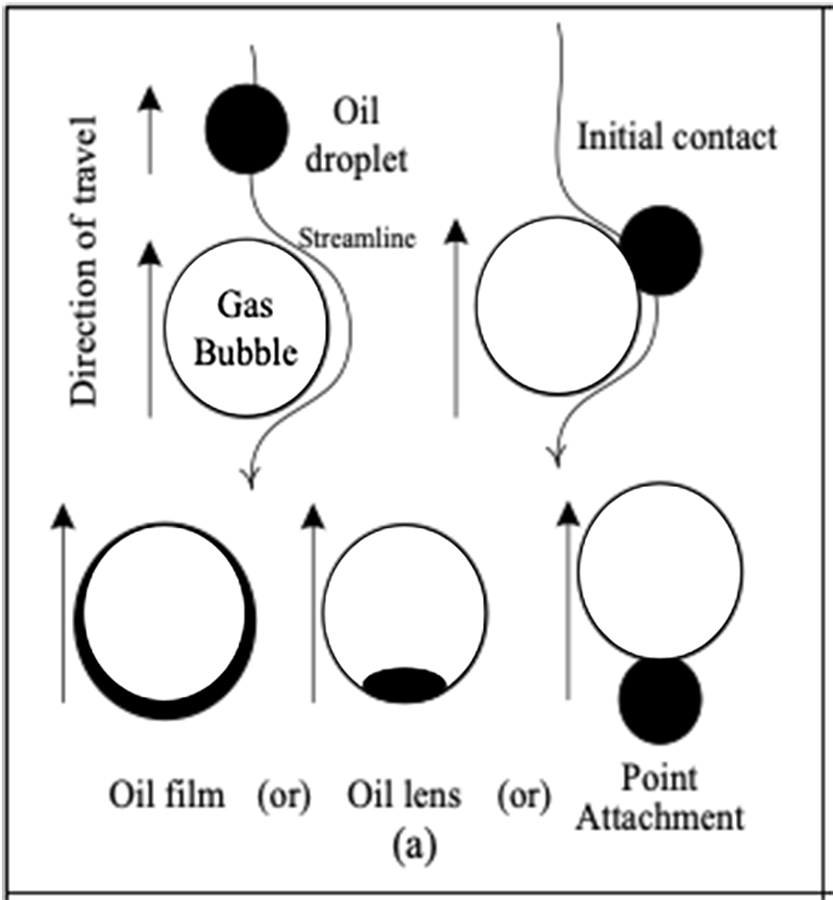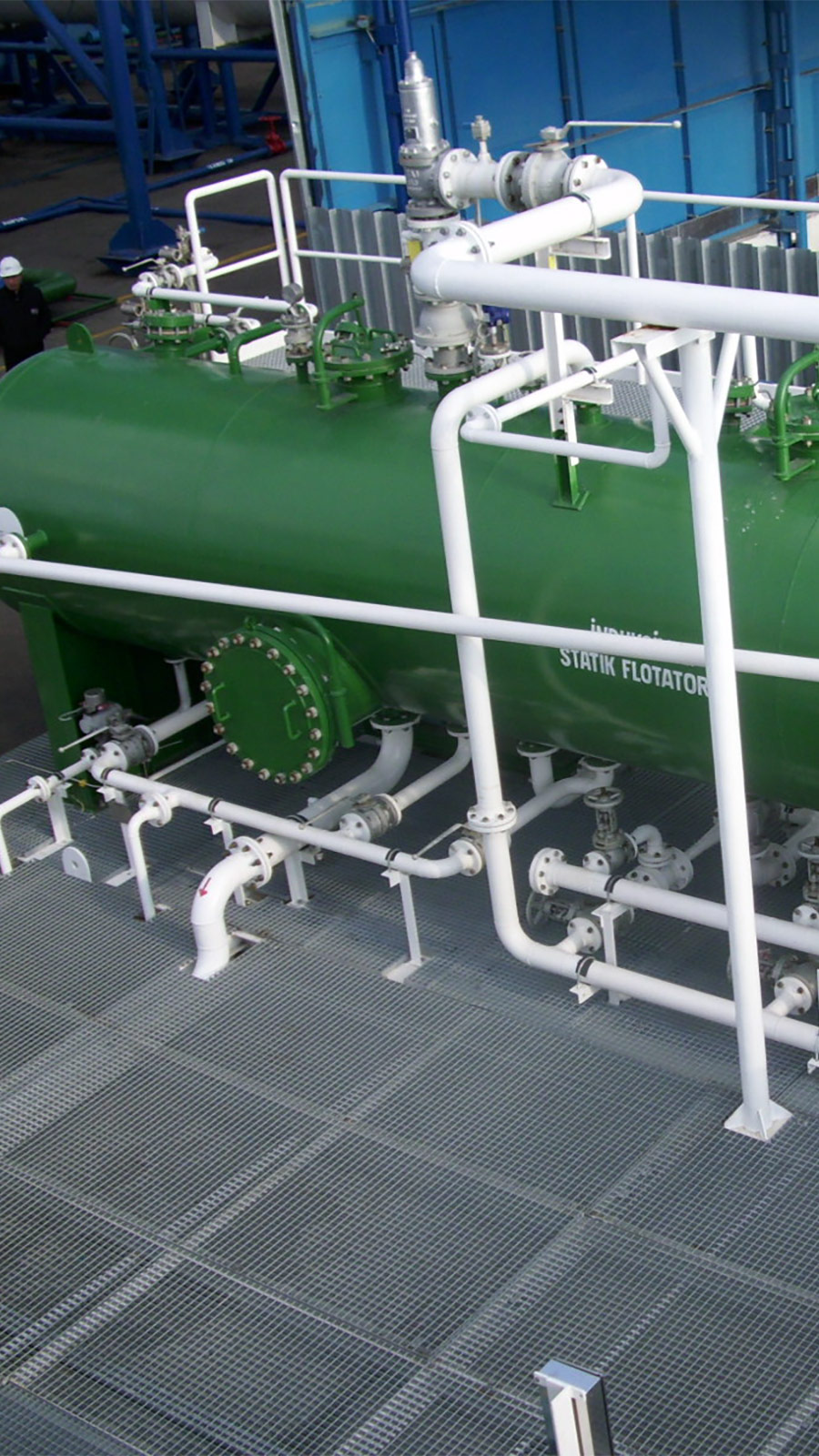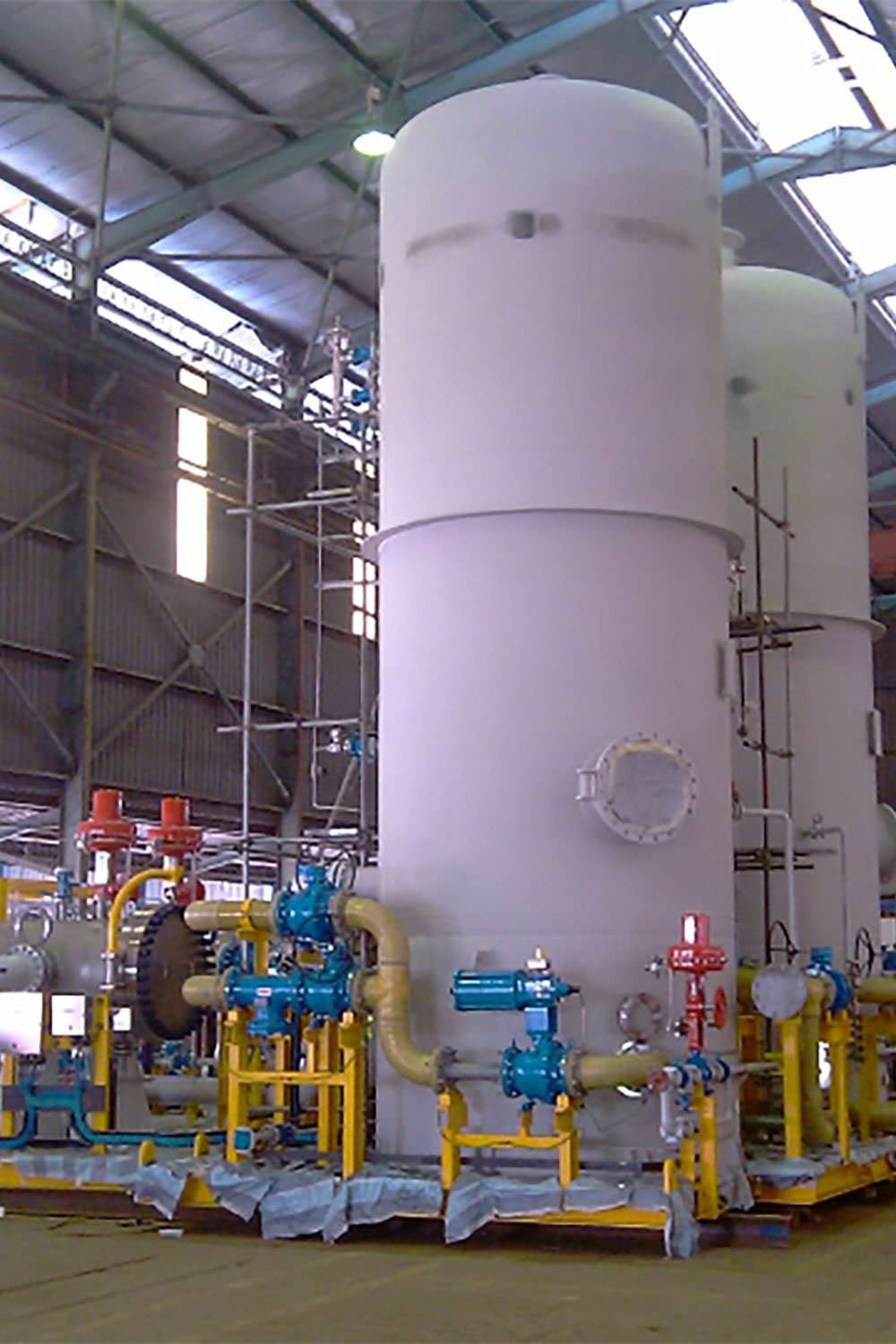Following the initial bulk removal, the secondary separation based on gas flotation technology will typically reduce oil in water from 50 ppm down to < 20 ppm.
Gas flotation Units are multiphase separators that increase the recovery of fine oil droplets and solid particulates from contaminated water streams by introduced gas bubbles to the dispersed oil droplet.
Various units can be used from CFU / ISF / IGF / DAF

Oil Droplet Flotation
The primary mechanism for oil droplet gas flotation is full or partial encapsulation of the gas bubble by the oil droplet. In this mechanism both the oil droplet and gas bubble exhibit buoyant rise in the fluid in the opposite direction of gravity. The velocity of the gas bubble is sufficiently higher than that of the oil droplet due to larger diameter and lower density, thus from the gas bubble inertial frame of reference the oil droplet is settling downward as if under gravitational influence.
The combined oil droplet/bubble, having a lower density than the oil droplet alone, can then be separated by gravity settlement.
Induced Gas Flotation (IGF / ISF)
The PEMTEC IGF unit is extremely efficient and reliable at removing free oil droplets and fine suspended solids from produced water streams. The IGF unit consists of a cylindrical pressure vessel partitioned into six compartments for flotation, degassing and skimming. The IGF vessel is design to accommodate four flotation chambers, each with its own eductor which recycle the gas from the vessel head space into the flotation chamber.
In each chamber, the oil-water stream is subjected to a contact of fine bubbles of gas to which the oil droplets can attach and form a low density agglomerate that floats to the surface of the water. Oil is then skimmed from the water surface and removed.
The clean water exits the fourth flotation cell and enters a fifth chamber which allows for the final separation of any gas from the water.
The IGF is often the preferred unit of choice for secondary produced water treatment when footprint is not an issue and a high quality water outlet is required.
Despite the residence time being similar to a CFU unit the IGF is able to produce higher free oil removal efficiencies. The IGF subjects the water to four times the gas flow of the CFU due to the four chamber configuration. Greater volumes of gas will increase the collisions between the gas and the oil droplets and, in turn, increase the oil droplet removal efficiency.


Compact Flotation Unit (CFU)
The need for lower oil in water concentrations and smaller footprints in the offshore environment has led to the development of the Compact Flotation Unit.
The CFU unit consists of a vertical vessel that contains an internal cylindrical section as well as other internals.
Produced water enters the vessel tangentially at the inner cylinder. Gas bubbles are introduced at the bottom of the inner cylinder by use of a single eductor. The water and gas bubbles flow up the inner cylinder and over into the annulus section. The gas and oil disengage from the water and clean water flows down the annulus and exits through the water outlet nozzle.
The oil forms a pad at the water surface and is periodically skimmed from the water by raising the water level above the oil weir.
The gas is recycled from the top of the vessel to the eductors by recycling a small amount of the treated water, this ensures that there is a fine dispersion of bubbles inside the CFU to enhance the oil droplet flotation.
Additional key internals are utilized on a specific case basis.
Discover The Future
Smart designs for removing oil and suspended solids from produced water
